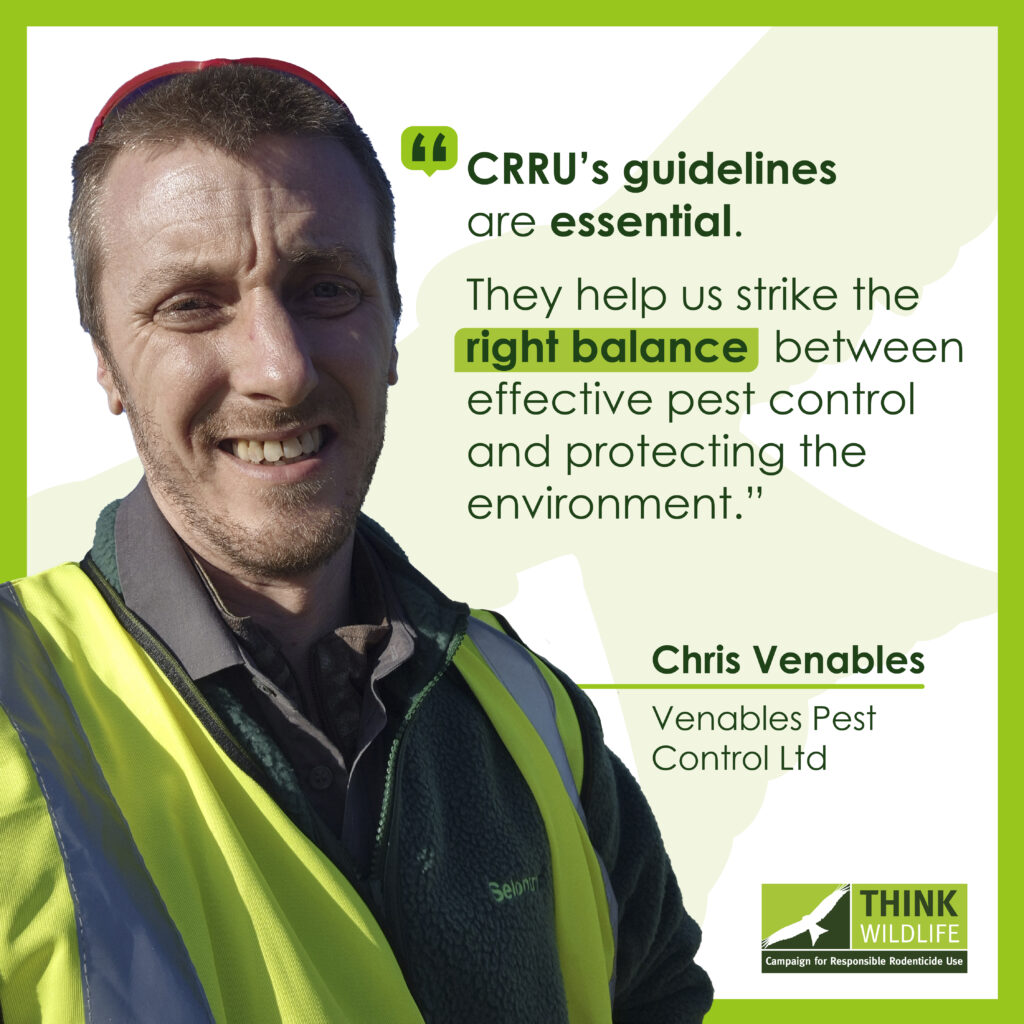02 Apr Case Study: Smarter Pest Control in Gloucestershire
In Gloucestershire, Chris Venables of Venables Pest Control Ltd. has spent nearly 20 years addressing one of the most persistent challenges in pest control: rats. With a meticulous approach and a focus on the responsible use of rodenticides, Chris is demonstrating how thoughtful pest management can balance effectiveness with environmental stewardship.
“Rats are clever creatures,” Chris highlights. “To control them effectively, you need to outthink them. But it’s not just about getting rid of them – it’s about how you do it and the bigger impact your methods might have.”
Rats are a widespread problem in urban and rural settings, particularly on farms where food, water, and shelter are readily available. They can cause significant damage to commodities, especially stored food and animal feeds, and the diseases they carry have major and serious public health implications.
Chris’s approach to management always begins with conducting an environmental risk assessment and gathering an understanding of the conditions that allow infestations to thrive. “Every situation is different,” he says. “You need to figure out why the rats are there and take steps to stop that from happening again.”
This preventative mindset defines Chris’s approach. Before applying rodenticides, he ensures that proofing measures – sealing entry points, securing food supplies, and improving hygiene – are in place. “You can’t rely on bait alone, and it is always a last resort. Long-term success comes from addressing the root cause,” he explains.
Recent changes in legislation, particularly around the use of second-generation anticoagulants (SGARs), have added complexity to pest control practices. For instance, rodenticides can no longer be applied around structures that aren’t classified as permanent buildings.
Chris recently encountered this challenge at a biogas facility, where undefined structures made SGARs, which are highly toxic and can be lethal with a single feeding, off-limits. Having reviewed the characteristics of the site, he turned to a cholecalciferol-based rodenticide which complies with the new regulations, and is associated with a lower risk of secondary poisoning to non-target wildlife, such as birds of prey. “All active ingredients and formulations have a place in certain circumstances when it comes to practical pest control, and there isn’t a bait that is suitable for all environments. It just so happened that the product choice fitted exactly with the site’s needs under the current legal framework.”
“However, I’m also very mindful of the primary poisoning risks associated with cholecalciferol, and consistently implement measures such as burrow baiting or securely covering bait stations.”
While rodenticides remain an important tool for large-scale infestations, Chris emphasises the need for precision and restraint. “The less rodenticide you use, the better – for the environment and for long-term pest control. Prevention and targeting are the key to reducing dependency on chemicals,” he says.
One of Chris’s ongoing frustrations is the improper use of rodenticides by unqualified individuals. “Members of the public can buy these products online without understanding the risks,” he explains. “It’s not uncommon to see poison thrown out in the open, creating dangers for wildlife and pets. That kind of misuse undermines everything we’re working towards and needs to be rooted out.”
Chris credits the Campaign for Responsible Rodenticide Use (CRRU) with providing essential support and guidance for pest control professionals. Their expertise and advocacy have helped practitioners like Chris navigate complex regulations while maintaining effective control measures. “CRRU’s guidelines are essential,” he says. “They help us strike the right balance between effective pest control and protecting the environment.”
Chris is also passionate about translating best practice to his clients and educating them on the importance of prevention and responsible practices. “Once farmers see the benefits of better proofing and storage, they’re more likely to invest in it,” he explains. “It’s about helping them see the bigger picture, and working together to protect public health.”
Chris believes the pest control industry is evolving rapidly, and professionals need to keep pace with new challenges and expectations. “We’re being asked to do more than just solve problems, and we now need to prove we’re doing it sensibly and sustainably,” he says. Chris sees this as an opportunity rather than a hurdle. “The tools and techniques are improving all the time. If we embrace these advancements and keep educating ourselves, we can make pest control safer, smarter, and more effective for everyone involved.”
Looking ahead, Chris also sees potential in bringing young people into the industry through apprenticeships. “Learning from experienced professionals ensures new entrants learn the trade from day one and build confidence,” he says. “Knowledge is our best weapon. Learn from the right people and do things properly.”
For Chris, the key to success lies in collective action from within the sector. “We’re not just pest controllers – we’re public health protectors,” he says. “When we do our job responsibly, we don’t just solve problems today – we help create a sustainable future for farms, wildlife, and the broader environment.”




